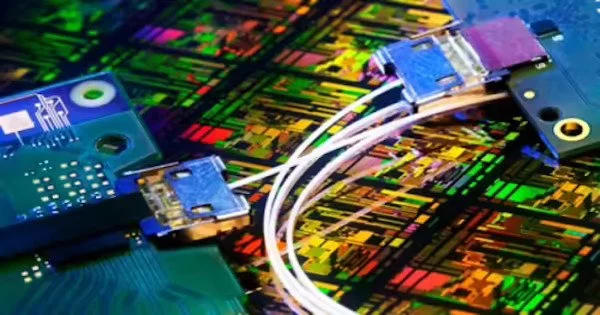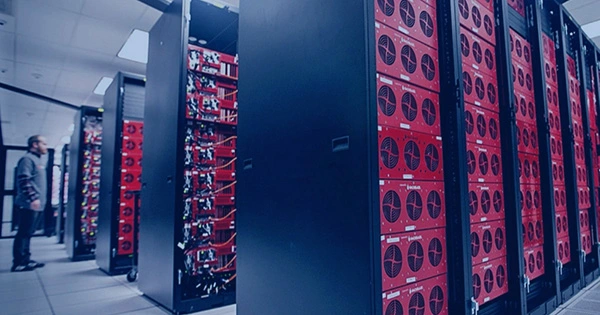Optical interconnects in integrated circuits refer to any system for transmitting signals from one part of an integrated circuit to another using light. Due to the high latency and power consumption incurred by conventional metal interconnects when transmitting electrical signals over long distances, such as in global interconnects, optical interconnects have been the subject of research. Interconnect scaling has been identified as a problem for the semiconductor industry by the International Technology Roadmap for Semiconductors (ITRS).
The use of optical signals, typically in the form of light, to transmit information between electronic components or systems is referred to as optical interconnects. They are a viable alternative to traditional electrical interconnects that rely on electron flow through conductive materials.
Nonlinear signals (e.g., digital signals) are traditionally transmitted by copper wires in electrical interconnects, and these electrical wires all have resistance and capacitance, which severely limits the rise time of signals when the dimension of the wires is scaled down. To replace interconnection between dies within an integrated circuit (IC) package, optical solutions are used to transmit signals over long distances.
Compared to electrical interconnects, optical interconnects have several advantages, including higher data transfer rates, lower power consumption, and immunity to electromagnetic interference. They guide light signals using optical fibers or waveguides, allowing for long-distance transmission with minimal signal loss.
Microelectromechanical system (MEMS) technology can be used to effectively integrate the optical components (i.e. optical waveguides, optical fibers, lens, mirrors, optical actuators, optical sensors, etc.) and the electronic parts together in order to control the optical signals inside the small IC package.
Here are some key points about optical interconnects:
- Data Transfer Rates: Optical interconnects can transmit data at extremely high speeds, ranging from gigabits per second (Gbps) to terabits per second (Tbps). This high bandwidth makes them suitable for applications that require fast data transfer, such as data centers, supercomputers, and high-performance computing.
- Low Power Consumption: Compared to electrical interconnects, optical interconnects consume less power. This is because light signals experience minimal resistance and do not generate as much heat as electrical currents flowing through conductors. As a result, optical interconnects are more energy-efficient and can help reduce overall power consumption in electronic systems.
- Electromagnetic Interference (EMI) Immunity: Unlike electrical interconnects, optical signals are not affected by electromagnetic interference. EMI can degrade signals, corrupt data, and increase error rates. In environments with high levels of electromagnetic noise, optical interconnects provide greater reliability and signal integrity.
- Long-Distance Transmission: Optical fibers used in optical interconnects are capable of transmitting signals over long distances with minimal loss. This property is critical for applications requiring communication between geographically dispersed systems, such as telecommunication networks and internet backbone infrastructure.
Application Areas
Telecommunications, data centers, high-performance computing, aerospace, defense, and consumer electronics are just a few of the industries that use optical interconnects. They are especially useful in scenarios that require high-speed data transfer, low latency, and a large amount of bandwidth.
















